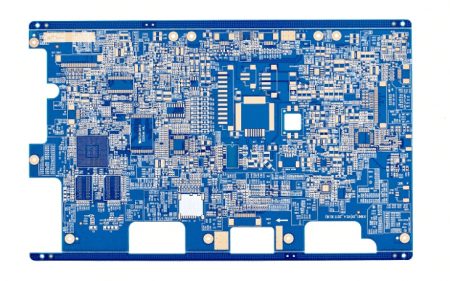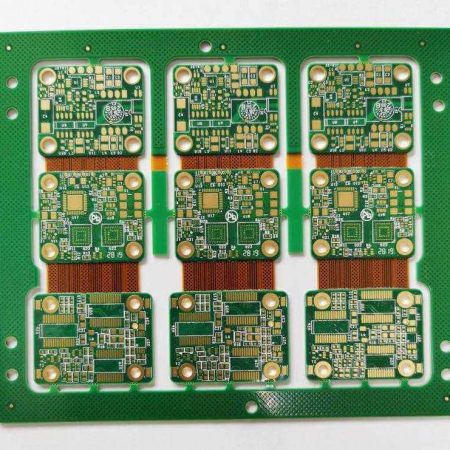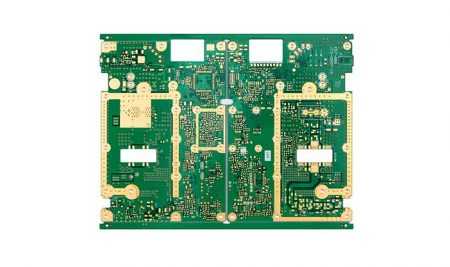- +86-755-23012705
- Building 3, Jinfeng Industrial Park, Fuyong Street, Baoan District, Shenzhen ,China
- [email protected]
Copper particles on the PCB manufacturing caused by the copper immersion process of multilayer circuit boards can be caused by any one of the copper immersion treatment steps. When alkaline degreasing has high water hardness and more borehole dust (especially double-sided without slag removal), it will not only cause roughness of the board surface, but also cause roughness in the hole; However, it will generally only cause roughness in the hole, and the slight pitting dirt micro-erosion on the plate surface can also be removed.
The quality of the micro-etching agent hydrogen peroxide or sulfuric acid used is too poor or the impurities of ammonium persulfate (sodium) are too high, and it is generally recommended that it should be at least CP grade, and industrial grade will cause other quality failures in addition to this; The copper content of the micro-etching tank is too high or the temperature is low, resulting in the slow precipitation of copper sulfate crystals;
The bath liquid is turbid and contaminated. Most of the activation liquid is caused by pollution or improper maintenance, such as air leakage of the filter pump, low specific gravity of the tank liquid, high copper content (the activation tank is used for too long, more than 3 years), and granular suspended solids or impurity colloids will be produced in the tank liquid, which will be adsorbed on the plate surface or hole wall, which will be accompanied by rough production in the hole.

Degumming or acceleration:
The bath is used for too long and becomes turbid, because most of the solution is now prepared with fluorobonic acid, which will attack the glass fibers in FR-4, resulting in the increase of silicate and calcium salts in the bath, and the increase in the copper content and tin dissolution in the bath will cause the generation of copper particles on the board.
The copper immersion tank itself is mainly caused by the excessive activity of the tank liquid, the dust in the air stirring, and the large number of small particles of solid suspension in the tank liquid. It can be effectively solved by adjusting the process parameters, adding or replacing the air filter element, the whole tank filtration, etc. After copper immersion, the dilute acid tank of the copper immersion plate should be temporarily stored, and the tank liquid should be kept clean, and the tank liquid should be replaced in time when it is turbid.
The storage time of the sinking copper plate should not be too long, otherwise the plate surface is easy to oxidize. Even in acidic solutions, it will oxidize, and the oxide film is more difficult to dispose of after oxidation, so copper particles will also be generated on the board surface.
In addition to the oxidation of the plate surface, the copper particles on the plate surface that are sinted by the copper immersion process mentioned above are generally distributed more evenly on the plate surface and have strong regularity. And the pollution generated here, whether conductive or not, will cause the generation of copper particles on the surface of the electroplated copper plate, and some small test boards can be used to deal with the control and judgment step by step, and the on-site fault board can be solved with a soft brush;
Pattern transfer process: there is residual glue in the development (extremely thin residual film can also be plated and coated during electroplating), or the cleaning is not clean after development, or the board is placed for too long after the pattern transfer, resulting in different degrees of oxidation of the board surface, especially when the board surface is not cleaned well or the air pollution in the storage workshop is heavy. The solution is to strengthen the washing, strengthen the schedule of the plan, and strengthen the acid degreasing intensity.

The acid copper plating tank itself, at this time, its pre-treatment generally does not cause copper particles on the board surface, because the non-conductive particles cause plate leakage or pits at most. The reasons for the copper particles on the plate surface caused by the copper cylinder can be summarized into several aspects: the maintenance of bath parameters, production operations, materials and process maintenance.
Bath parameter maintenance includes high sulphuric acid content, low copper content, low or high bath temperature, especially in plants without temperature-controlled cooling systems. At this time, the current density range of the bath will decrease, and according to the normal production process, copper powder may be generated in the bath and mixed into the bath liquid;
In terms of production and operation, the main current is too large, the splint is poor, the empty clamp point, the plate is dropped in the tank and dissolved by the anode, etc., which will also cause the current of some plates to be too large, produce copper powder, fall into the tank liquid, and gradually produce copper particle failure; In terms of materials, the main problems are phosphorus content and phosphorus distribution uniformity of phosphor copper angles; In terms of production and maintenance, it is mainly a large treatment, when the copper horn is added, it falls into the tank, mainly during the large treatment, anode cleaning and anode bag cleaning.

Many factories are not well handled, and there are some hidden dangers. The copper ball treatment should be cleaned on the surface, and the fresh copper surface should be slightly etched with hydrogen peroxide, and the anode bag should be soaked in hydrogen peroxide sulfate and lye solution successively, and cleaned, especially the anode bag should be cleaned with a gap of 5-10 microns PP filter bag.
Your Trusted Partner for PCB Success: XPCB Limited
Let XPCB Limited be your guide to PCB success. Our comprehensive PCB manufacturing, rapid prototyping, and turnkey PCBA services are designed to meet your needs with ease. Count on us to deliver reliable solutions that exceed your expectations. With XPCB Limited, your journey to PCB excellence starts here.






XPCB Limited is a premium PCB & PCBA manufacturer based in China.
We specialize in multilayer flexible circuits, rigid-flex PCB, HDI PCB, and Rogers PCB.
Quick-turn PCB prototyping is our specialty. Demanding project is our advantage.
Tel : +86-136-3163-3671
Fax : +86-755-2301 2705
Email : [email protected]
© 2024 - XPCB Limited All Right Reserve
